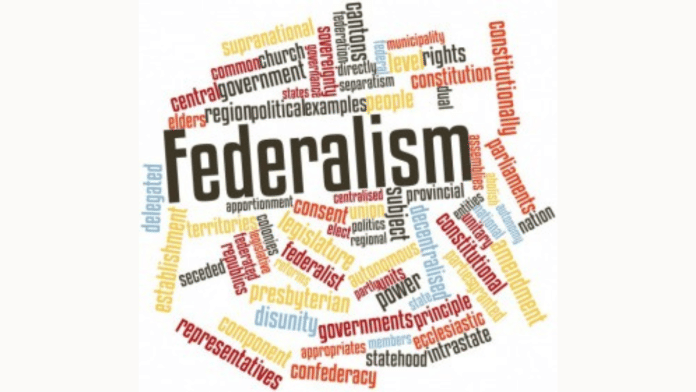When India gained independence in 1947, it inherited not a people-centered map, but a patchwork of borders crafted for imperial convenience. The internal divisions of the country—provinces like Bombay and Bengal, princely states like Hyderabad and Travancore—were drawn not along cultural or linguistic lines but for administrative ease. Telugu speakers were split between Madras and Hyderabad, Maratha regions scattered across provinces, and Bengal bundled with Bihar, Odisha, and Assam. The map of India made little emotional or cultural sense—it was a colonial relic superimposed on a civilizational mosaic.
Ironically, the Congress, during the freedom movement, had promised to change this. In 1920, at its Nagpur session, it reorganized its internal structure along linguistic lines, arguing that language was essential for mass mobilization and democratic participation. The idea was bold: states should reflect the linguistic identities of the people. But when freedom finally came, that idealism gave way to apprehension. The trauma of Partition, the daunting task of integrating 540 princely states, and the fear of fragmentation made leaders like Nehru and Patel wary. The same Congress that once championed linguistic states now backed away from the very idea it had nurtured.
Yet the framers of the Constitution provided a masterstroke: the power to redraw internal boundaries was vested in the Centre. This wasn’t just administrative foresight—it was a political lifeline. It allowed India’s internal geography to evolve over time in response to the aspirations of its people, without compromising national unity. Indian federalism, thus, was designed to be both strong and supple—capable of adapting to diversity without fracturing under its weight.
This flexibility proved critical. The initial years saw the integration of princely states into larger political entities—Saurashtra, Madhya Bharat, PEPSU, Rajasthan. Rajpramukhs were appointed as ceremonial heads to smooth the transition from monarchy to democracy. Yet, by the time of the first elections in 1951–52, the internal map was still colonial in spirit. It lacked emotional legitimacy.
The turning point came in 1952 when Gandhian activist Potti Sreeramulu died on a hunger strike demanding a Telugu-speaking state. His death sparked mass uprisings and forced the government’s hand. Andhra became the first linguistic state in independent India in 1953. The floodgates opened. Nehru, reluctantly, appointed the States Reorganisation Commission (SRC) in 1953. Its 1955 report led to a sweeping overhaul in 1956: linguistic states like Kerala, Karnataka, and a reorganized Tamil Nadu were born; Maharashtra and Gujarat followed in 1960 after fierce agitations and bloodshed.
But the path to linguistic states was rarely smooth—and often violent. The Samyukta Maharashtra Movement saw police firings that left over 100 dead. The Punjabi Suba movement ignited communal tensions between Sikhs and Hindus. The Gorkhaland agitations in the 1980s and 2017 brought bloodshed to the hills. The Uttarakhand movement witnessed the horrific Rampur Tiraha firing, while Telangana’s struggle in 1969 and later years saw suicides, riots, and relentless mobilization. The map may have changed through laws, but the pressure for change came from the streets—and sometimes from martyrs’ graves.
In the Northeast, new states emerged not from language but from ethnic and historical assertions. Nagaland was granted statehood in 1962 after years of insurgency. Tripura, Manipur, Meghalaya, Mizoram, and Arunachal Pradesh followed in waves, often amid militancy. Sikkim merged in 1975 after a referendum abolished its monarchy. In 2000, Jharkhand, Chhattisgarh, and Uttarakhand were born out of deep-seated regional demands. And in 2014, after decades of agitation and broken promises, Telangana was finally carved out of Andhra Pradesh.
The most controversial reorganization came in Jammu and Kashmir. Granted special status through Article 370, it retained autonomy for decades—until 2019, when the government abrogated the article and split the state into two Union Territories, bringing the last princely anomaly into full constitutional fold.
Yet Indian federalism has never been just about borders—it is about belonging. Language riots in Tamil Nadu, anti-migrant agitations in Assam and Maharashtra, identity clashes in Karnataka, and regional mobilizations in Bengal and the Northeast all testify to how deeply people feel about their place in the Union. But the miracle is this: despite these tensions, the system has held. Not because differences disappeared, but because the Constitution allowed space for them to be expressed, negotiated, and accommodated.
Federalism in India is not a fixed structure—it is a living conversation between unity and diversity. The Centre’s power to reorganize states has acted as a pressure valve, absorbing tensions into the democratic mainstream. The process has been messy, often painful, sometimes violent—but it has worked. It is the reason why India, despite its complexity, has not fractured into fragments.
Even the cultural pulse reflects this unity. A boy from Jharkhand becomes a cricketing legend in Tamil Nadu. Migrants may face hostility, yet they drive the engines of Mumbai, Bengaluru, and Delhi. Bollywood songs, cricket matches, and space missions are shared moments of national pride that blur linguistic lines.
In the end, Indian federalism is not a product of symmetry—it is a triumph of adaptability. It has survived, and thrived, because it allowed the map to change without losing the nation.


